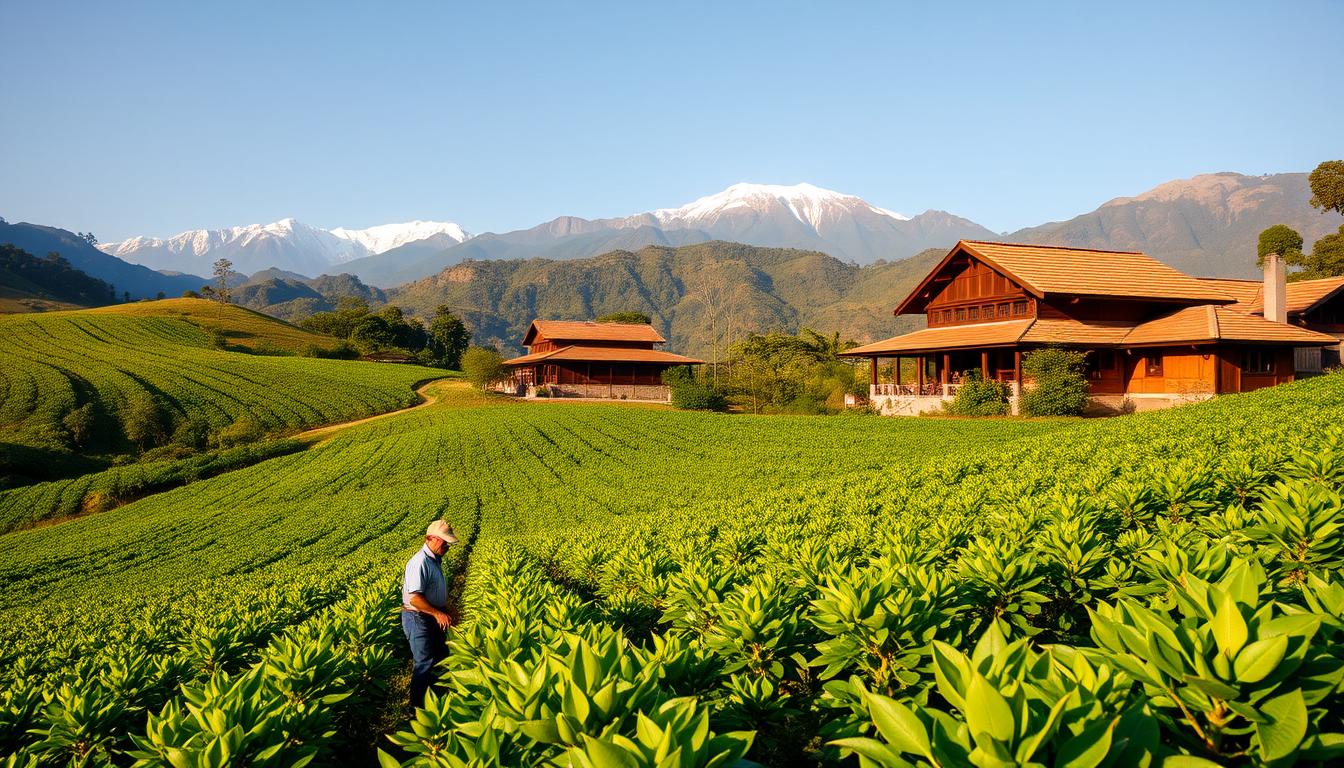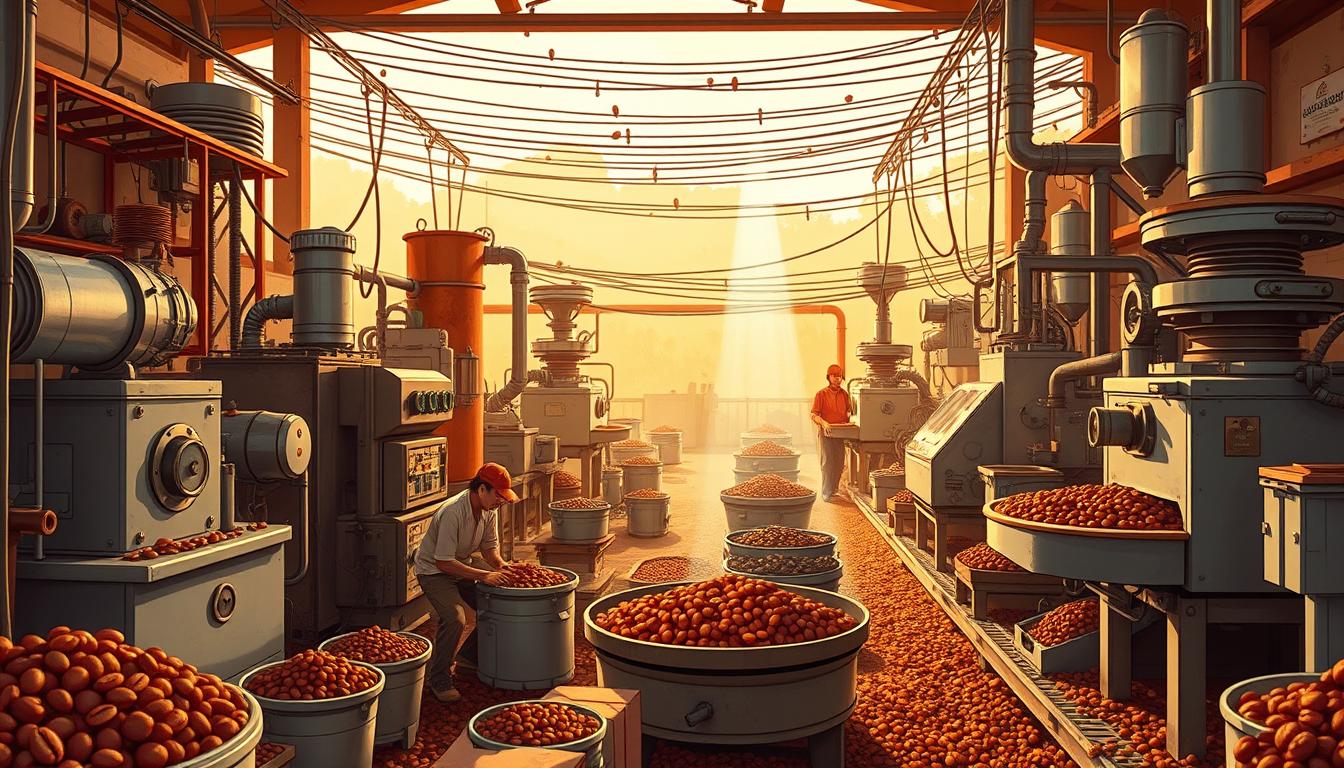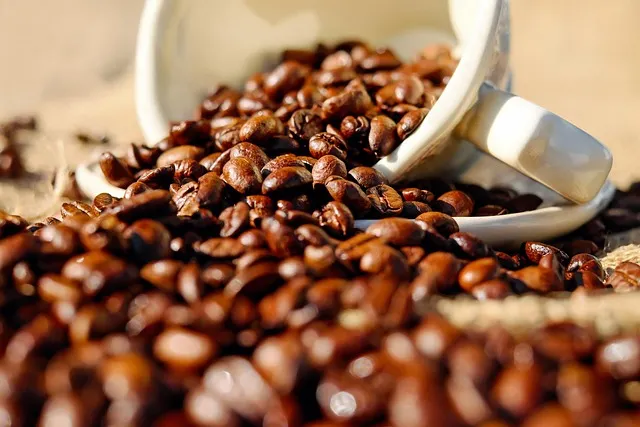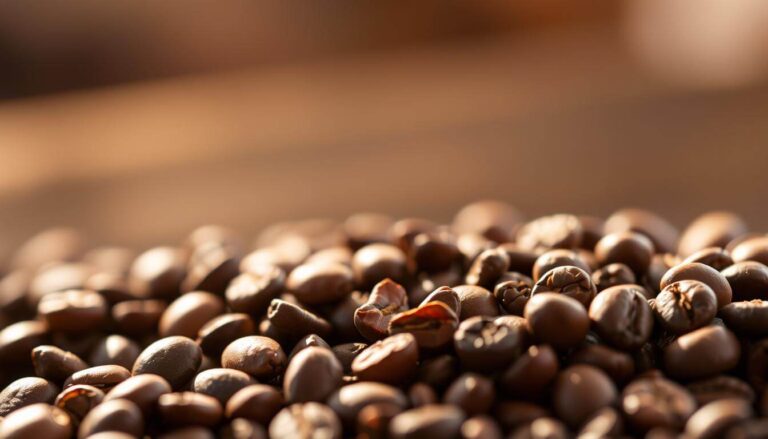Enjoy the Finest Colombian Coffee Beans
Indulge in the rich flavors and aromas of specialty coffee from Colombia. It’s known for producing some of the world’s finest coffee beans. Colombia’s climate, soil, and altitude make it perfect for coffee.

The country’s coffee heritage is steeped in tradition. Many farms have passed down their expertise through generations. This makes Colombian coffee beans highly prized for their distinct flavor profiles and high quality.
Key Takeaways
- Colombian coffee is known for its rich flavors and aromas.
- The country’s unique climate and soil conditions make it ideal for coffee production.
- Colombian coffee beans are highly regarded for their quality and distinct flavor profiles.
- The coffee industry is a significant part of Colombia’s heritage and economy.
- Specialty coffee from Colombia is sought after by coffee connoisseurs worldwide.
The Rich Heritage of Colombian Coffee
Colombian coffee has a long history and geography that make it special. For over a century, it has been a top player in the global coffee scene. It’s known for its high quality and unique flavors.
Historical Significance in Global Coffee Markets
Colombian coffee has been a big deal in the world’s coffee markets. It’s famous for its long coffee-growing traditions and being one of the biggest coffee producers.
Colombia’s Coffee Growing Tradition
Colombia’s geography is perfect for growing coffee. The Andean region’s high altitudes and rich soil are ideal. The country’s coffee tradition is also shaped by its culture and the hard work of its farmers.
Some key coffee-growing areas in Colombia are the Andean region, Nariño, and Quindío. Each has its own special features.
| Region | Altitude (meters) | Notable Characteristics |
|---|---|---|
| Andean Region | 1,200 – 2,200 | Rich volcanic soil, balanced acidity |
| Nariño | 1,800 – 2,300 | High altitude, distinct flavor profiles |
| Quindío | 1,500 – 2,000 | Part of the Coffee Triangle, known for quality |
Current State of Colombian Coffee Production
Colombian coffee production is changing, thanks to many factors. The industry sees ups and downs in how much coffee is made, its market share, and what people want to buy.
The Colombian coffee industry is famous for its top-notch Arabica beans. These beans are grown in different parts of the country. Now, there’s a move towards making coffee in a way that’s better for the environment.
Recent Harvest Reports for 2023
The 2023 harvest reports for Colombian coffee look good. Some areas have seen more coffee than expected. The total coffee made in Colombia went up by 5% from last year.
Production Volumes and Market Share
Colombian coffee production has been going up for a few years. This is because more specialty coffee roasters want it. Colombian coffee is a big deal worldwide, known for its unique tastes.
| Region | Production Volume (2022) | Production Volume (2023) | Change |
|---|---|---|---|
| Andean Region | 1,200,000 bags | 1,260,000 bags | +5% |
| Sierra Nevada | 800,000 bags | 840,000 bags | +5% |
| Other Regions | 400,000 bags | 420,000 bags | +5% |
Breaking News: Climate Challenges Affecting This Year’s Crop
Reports show that climate challenges are hitting this year’s Colombian coffee crop hard. Rising temperatures and unpredictable rain are major issues in key growing areas.
Unusual Weather Patterns in Key Growing Regions
Colombian coffee is famous for its quality, thanks to its unique climate. But, unusual weather patterns are now common, disrupting coffee production. For example, Antioquia has seen too much rain, while Quindío has faced drought.
Industry Response to Environmental Challenges
The Colombian coffee industry is tackling these challenges head-on. They’re turning to sustainable coffee practices like shade-grown and organic farming. These methods help fight climate change and make farming greener.
“We’re seeing a significant shift towards sustainability in our coffee production. It’s not just about adapting to climate change; it’s about creating a resilient coffee ecosystem.” – Alejandro Moreno, Colombian Coffee Growers Association
Here’s a closer look at how the industry is responding:
| Region | Climate Challenge | Industry Response |
|---|---|---|
| Antioquia | Heavy Rainfall | Implementation of drainage systems |
| Quindío | Drought | Adoption of water conservation techniques |
| Nariño | Temperature Fluctuations | Use of shade trees to stabilize soil temperature |
By adopting sustainable practices and adapting to climate change, the Colombian coffee industry aims to keep its crops thriving for years to come.
Colombia’s Premier Coffee Growing Regions
Colombia’s geography is diverse, leading to several top coffee regions. Each area has its own special traits. The country’s coffee belt is famous for its high-quality Arabica beans. This is due to its great climate, rich soil, and enough rain.
Huila: The Rising Star
Huila is becoming a big name in Colombia’s coffee world. It’s known for its top-notch coffee beans. The region’s coffee has a balanced taste and rich flavor, loved by specialty coffee fans.
Nariño: High-Altitude Excellence
Nariño is also known for its amazing coffee. The high altitudes here make the coffee beans mature slowly. This results in complex flavors, bright acidity, and hints of citrus and fruit, appealing to coffee lovers.
Sierra Nevada: Unique Microclimates
The Sierra Nevada region stands out for its unique microclimates. This allows for a wide variety of coffee types to grow. The snow-capped mountains and varied altitudes add to the coffee’s rich taste. Sierra Nevada’s coffee is special, making it a hit in the specialty coffee market.
What Makes Colombian Coffee Beans Special
Colombian coffee is famous for its quality, not just how much is made. It has unique flavors from different places. These beans are loved for their exceptional taste and aroma by coffee lovers everywhere.
Distinctive Flavor Profiles
The taste of Colombian coffee beans comes from the country’s varied geography and climate. Regional variations lead to many flavors, like fruity, floral, nutty, and caramel.
Acidity and Body Characteristics
Colombian coffee is known for its balanced acidity and medium body. The acidity is bright and snappy. The body is smooth and velvety, making it a joy to drink.
Regional Flavor Variations
Colombia’s different regions have unique coffee flavors. For example, Andean coffee is balanced and rich. Sierra Nevada coffee is known for its herbal and fruity taste.
Arabica Dominance in Colombian Crops
Most of Colombia’s coffee is Arabica. Arabica beans are loved for their complex flavor profiles and lower acidity. This makes Colombian coffee very high quality.
By focusing on Arabica, Colombian coffee makers keep high standards. They meet the needs of the specialty coffee market, where quality and uniqueness matter a lot.
New Sustainability Initiatives in Colombian Coffee Industry
The Colombian coffee sector is moving towards sustainability. It’s focusing on fair trade, organic farming, and water conservation. This change is driven by consumer demand and the industry’s goal to reduce its environmental impact.
Recently Launched Fair Trade Programs
Colombia has started several fair trade programs. These programs aim to ensure coffee farmers get a fair price for their coffee. They promote fair trade and help improve the lives of farmers.
For example, Fairtrade Colombia has teamed up with local cooperatives. They provide training and resources to farmers.
- Fairtrade certification for smallholder farmers
- Price stabilization mechanisms to protect farmers from market fluctuations
- Community development projects funded by fair trade premiums
Innovative Organic Farming Practices
Organic farming is becoming more popular in Colombia. Many producers are using new methods that cut down on chemicals and boost biodiversity. Organic farming makes the soil healthier and produces better coffee.
The Colombian government supports organic farming. It offers subsidies and technical help to farmers.

Water Conservation Efforts Making Headlines
Water conservation is key in coffee production. Colombian producers are using new ways to save water. They’re using rainwater harvesting and efficient irrigation systems.
These steps are good for the environment and can also lower costs.
Key water conservation strategies include:
- Implementing drip irrigation systems
- Promoting rainwater collection and storage
- Adopting water-efficient processing methods
These sustainability efforts are changing the Colombian coffee industry. They make it more eco-friendly and socially responsible. As more people want sustainable products, Colombian coffee producers are ready to meet this need while improving their sustainability.
Colombian Coffee Beans: Latest Market Trends and Pricing
The latest news on Colombian coffee beans shows changes in global market trends and prices. Colombia is a top coffee producer. Its export numbers and price changes affect the world coffee market.
2023 Export Statistics
In 2023, Colombian coffee exports have shown a resilient trend despite challenges. Exports went up by 5% from last year. The U.S. and Europe are big buyers.
The total export volume hit 12 million bags in the first half of 2023.
Current Price Fluctuations and Projections
Colombian coffee prices have seen volatility due to weather and demand. Prices are now about $180 per bag, up from last year. Experts predict stable prices for the rest of 2023, with a chance for a slight rise.
The outlook for Colombian coffee is good. This is thanks to more people wanting specialty coffee and support for sustainable farming.
Direct Trade Relationships Transforming the Industry
The Colombian coffee industry is changing fast thanks to direct trade. This change comes from farm-to-cup partnerships. They are changing how coffee is bought and sold.
Recent Success Stories of Farm-to-Cup Partnerships
Many farm-to-cup partnerships in Colombia have done well. For example, La Casa de Café in Quindío has teamed up with a US roaster. This partnership has boosted the farm’s income by 30% and improved its coffee quality.
Key benefits include clearer prices, better quality control, and more profit for farmers.
Economic Impact on Colombian Farming Communities
Direct trade has had a significantly positive impact on farming communities in Colombia. Farmers get more money for their coffee, which has helped their lives.
A study by the Colombian Coffee Growers Federation shows farmers in direct trade partnerships earn more. This lets them invest in their farms and communities.
Innovative Processing Methods Revolutionizing Colombian Coffee
New processing methods are changing Colombian coffee. The industry is moving towards more advanced techniques. These methods improve the quality and uniqueness of Colombian coffee beans.

Experimental Fermentation Techniques Gaining Attention
Experimental fermentation is becoming popular in Colombia. It involves changing the fermentation process to create unique flavors. For example, prolonged fermentation times and controlled temperature environments are used to make complex tastes.
This method not only boosts coffee quality but also gives producers an edge in the market.
- Enhanced flavor profiles through controlled fermentation
- Increased quality and consistency in coffee production
- Differentiation in the competitive specialty coffee market
Honey and Natural Processing: The New Frontier
Honey and natural processing are gaining fans in Colombia. These methods use minimal water and careful handling to keep natural flavors. Honey processing is known for its unique flavors, with hints of honey, fruit, and flowers.
“The adoption of honey and natural processing methods has not only improved the quality of our coffee but also reduced our environmental footprint.”
These new methods are changing the Colombian coffee scene. They help producers make high-quality, unique coffees that meet specialty coffee demands.
Award-Winning Colombian Coffee Beans of 2023
In 2023, coffee lovers worldwide are talking about Colombian coffee beans. The country’s coffee industry is getting more recognition. Many farms and producers have won big at international coffee competitions.
Recent Competition Results and Recognition
Colombian coffee beans have done great in global competitions. They show off their amazing taste and quality. Reports say Colombian coffee producers have won many awards, boosting the country’s coffee reputation.
The Colombian Gesha variety is getting lots of praise for its unique flavor. Colombian coffee’s success in competitions shows the country’s focus on quality and innovation.
| Competition | Award | Farm/Producer |
|---|---|---|
| World Coffee Championships | Gold Medal | Café Granja La Gloria |
| Specialty Coffee Association | Best Colombian Coffee | Finca El Injerto |
Profiles of This Year’s Top-Scoring Farms
Top-scoring farms of 2023 use new processing methods and sustainable farming. For example, Finca El Injerto is known for its green practices and top-notch coffee.
“The quality of Colombian coffee is unmatched, thanks to the dedication of our farmers and the rich biodiversity of our regions.” –
Coffee Industry Expert
The success of these farms shows Colombian coffee’s great promise. It also raises the bar for the global coffee industry.
How American Consumers Are Embracing Colombian Coffee
The US coffee market is changing, and Colombian coffee is becoming a top choice. People love it for its high quality and unique taste.
Trending Brewing Methods in the US Market
American coffee lovers are trying new ways to enjoy Colombian coffee. They’re using:
- Pour-over: It brings out the coffee’s complex flavors.
- Cold brew: It gives a smooth, mellow coffee taste.
- Aeropress: It highlights the coffee’s rich flavors.
These brewing methods are popular in specialty coffee shops across the country.
Specialty Coffee Shops Featuring Colombian Beans
Specialty coffee shops in the US are adding Colombian beans to their menus. Places like Blue Bottle Coffee and Intelligentsia Coffee are showing off the beans’ quality and taste.
Colombian coffee’s popularity in the US shows it’s winning over coffee fans.
Conclusion
Colombian coffee beans are becoming more popular in the United States. This is because of the country’s rich coffee history and diverse growing areas. Also, Colombia’s focus on sustainable coffee farming is helping its coffee industry grow.
The trend towards sustainable coffee is big in Colombia. Many farms are using organic farming and saving water. These efforts make the coffee better for the environment and taste better too.
More Americans are choosing Colombian coffee. The industry is answering by improving quality and finding new ways to make coffee. With top-notch beans and a strong presence in coffee shops, Colombian coffee is leading the way globally.
FAQ
What makes Colombian coffee beans considered among the finest?
Colombian coffee beans are famous for their balanced taste and sweet flavor. They have a rich, caramel-like sweetness that people love.
How has Colombia’s unique geography contributed to its coffee production?
Colombia’s Andean region and varied climates help create many coffee types. This diversity makes Colombian coffee stand out worldwide.
What are the current climate challenges affecting Colombian coffee production?
Weather changes, like warmer temperatures and different rain patterns, are hurting coffee quality and yields. This is true in many key areas.
What sustainability initiatives are being implemented in the Colombian coffee industry?
The industry is working on fair trade, organic farming, and saving water. These efforts aim to make coffee production more sustainable.
How are direct trade relationships transforming the Colombian coffee industry?
Direct trade is creating closer ties between farmers and coffee lovers. It boosts the economy of farming communities and improves coffee quality.
What are the latest market trends for Colombian coffee beans?
The market for Colombian coffee is changing fast. Export numbers and prices are shifting, showing a strong demand for top-quality coffee.
What innovative processing methods are being used in Colombian coffee production?
New methods like experimental fermentation and honey processing are being tried. They aim to bring out more complex flavors in coffee.
How are American consumers embracing Colombian coffee?
Americans are trying new ways to brew coffee and looking for specialty shops. This interest is helping the market grow.
What are the distinctive flavor profiles of Colombian coffee?
Colombian coffee is known for its balanced taste and rich body. Flavors can range from sweet caramel to fruity and wine-like, depending on where it’s from.
Why is Arabica dominant in Colombian coffee crops?
Arabica is chosen for its better taste and quality. Colombia’s climate and geography are perfect for growing Arabica coffee.




